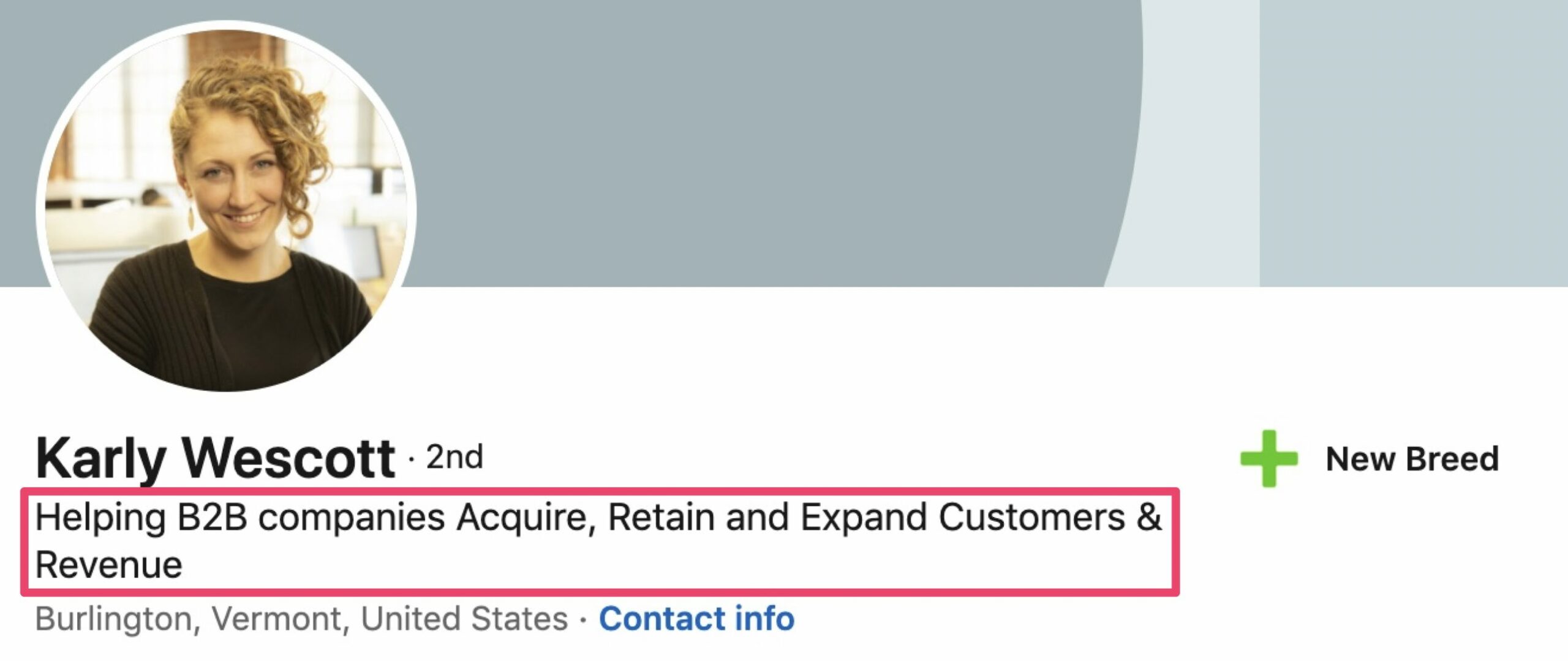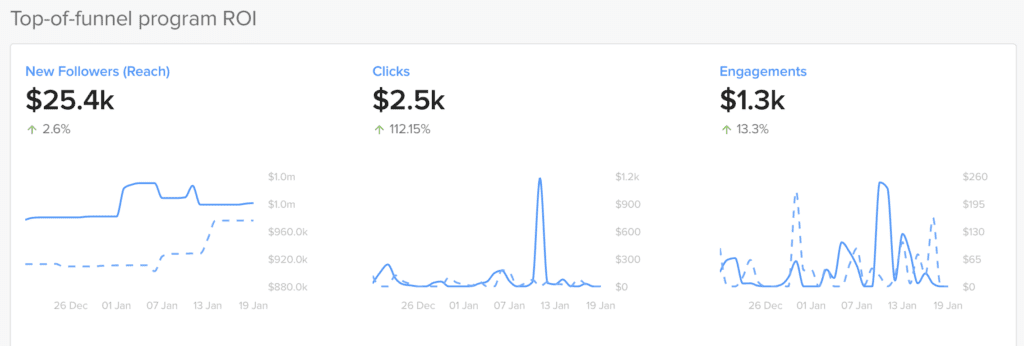We make quick judgments and form first impressions upon meeting someone, and research shows that we do the same thing when browsing social media profiles.
Today, even before someone spends any actual face time with you, they can view your LinkedIn or Instagram profiles and make assumptions about who you are both personally and professionally. That can affect your personal brand, your effectiveness at social selling, and more.
That’s why it’s so important to ensure that your social media profiles accurately communicate who you are. So here are ten tips to improve your social media profiles in under an hour and in the long-term.
1. Be Picture Perfect.
No, you don’t need a stunning headshot. But what you do need is a high-quality profile picture.
This doesn’t have to be a buttoned-up professional pic in your best suit. It’s OK to have some fun and showcase your personality, especially if it fits your role (i.e. you work in a creative field vs. a highly regulated industry like financial services).
Use the same photo across your social networks to consistently communicate your personal brand and make it easy for people to identify you.

Finally, ensure that all your photos — whether they’re profile pics or header images — are the right size. Consider how they’ll look on both mobile and desktop devices or the photo is expanded.
Luckily, every social channel tells you exactly what image sizes to use.
2. Highlight What You Can Do For Your Audience.
Of course, the bio of your social media profile is a place to talk about yourself. But it’s a mistake to make it all about you.
When you use social media for business, you need to communicate not only who you are, but also what you can do for your followers.
A great place to do this is your LinkedIn headline, like Karly Wescott does in the example below.

Your posts — especially those you pin at the top of the page — should deliver this message as well.
When people first view your social media profiles, they’re not going to scroll too far back to discover who you are. So make sure your personal brand and the value you can deliver to your audience is clear and consistent in everything you post.
Join Us Live Each Week on Everything Employee Advocacy 😎
Don't miss our weekly live events to learn about launching an employee advocacy program, social ROI and data deep dives, and even product exclusives.
3. Pin Your Best Content.
Speaking of pinning your best content, you should pin your best content.
For example, you can pin updates to your LinkedIn page, showcase your top tweet, and highlight your favorite Instagram photos.

Showcase the posts that best communicate your skills and accomplishments, especially those that garnered a lot of engagement.
4. Optimize Your Profile for Search.
Whether you’re looking for new job opportunities or trying to connect with potential customers, you can’t effectively accomplish either on social media unless you’re easy to find.
That’s why your social media profiles need to contain relevant keywords and hashtags in the right places.
This is important both for search within individual social networks, as well as for organic search results on Google since social media sites often populate search results, such as in the example below.

So make yourself easy to find by using Google Keyword Planner, Semrush, Ahrefs, or another keyword-research tool to determine which keywords to populate your social media profiles with.
You can do the same thing to research hashtags and select the ones that’ll be the best for your bio.
Sprinkle these throughout your social media profile. For example, on LinkedIn, you may include them in your job title, headline, experience or skills.
However, be sure to use them organically — don’t just drop them in at random or create a long list of keywords.
Finally, be consistent in your keyword and hashtag use because you want your personal brand to be consistent across your social media profiles.
5. Ask for Contributions.
Reach out to individuals in your network and ask them to provide you with reviews, endorsements, and recommendations
This kind of positive feedback doesn’t only make you look appealing to potential employers who can easily see your top-rated skills, but it also builds social trust among your followers and shows them that you’ll deliver on the promise you make in your bio.

6. Get in Some Face Time.
Your profile photo shouldn’t be the only place your face appears — your followers should occasionally see the real you in photos, Stories, videos, and more.
You don’t have to post weekly selfies or feature your mug front and center as you share your top marketing tips in a social video. But you do want to ensure that you’re getting some face time in with your audience.

This improves your personal brand and makes you more relatable — and easily recognizable — to your followers.
7. Untag Yourself From Posts and Photos That Don’t Enhance Your Brand.
Go through all your social media profiles and untag yourself in pictures and posts that are inappropriate, unprofessional, or have the potential to harm your personal brand.

Also, take the time to set up your privacy settings and preferences to determine who can see your tagged posts and who’s permitted to tag you in posts.
You may also want to set your preferences to allow you to approve photos or posts that you’re tagged in before they appear on your profile.
8. Promote Your Other Social Media Profiles.
Cross-promote your social presence across various networks.
Some social channels, such as Instagram, allow you to include only one link on your social media profile. However, other networks have multiple fields for websites and links.
LinkedIn, for example, lets you include your twitter account, as well as your personal website and company site. And Facebook has several fields that let you showcase all the places your followers can find you.
9. Publish a Variety of Content.
It’s essential to provide your audience with numerous types of content. This not only keeps your audience engaged, but it also helps you win favor from algorithms and increases the odds that your content will appear in people’s feeds.
Take a multimedia approach and create text posts, upload videos, share memes, post links, and more. And don’t be afraid to experiment with new social features.
Not sure what to post? The most important thing to keep in mind is your audience.
Consider the kind of content they’d find helpful, interesting, or engaging, and continually ask yourself if what you create and share truly provides value.
10. Get the Right Tools.
There’s no shortage of tools available to help you improve your social media profiles, your social presence as a whole, and even your brand’s social presence.
Here’s a few to consider making part of your tech stack:
- Social-scheduling tools: Trying to maintain social media profiles across numerous networks and consistently share content on them? That can take up a lot of time, and you no doubt have countless other tasks to take care. That’s where a social-scheduling platform like Buffer or Hootsuite comes in handy, so you can queue up what you want to share and when.
- Employee advocacy solution: You’ll never have a shortage of great content to share — or wonder if your employer would approve of that link or post — when you have a pure-play advocacy program like EveryoneSocial. You’ll have all the best company-approved content at your fingertips, and you can easily add your own take before you share multimedia content across all your networks with just one click. Plus, you can schedule posts and get access to detailed analytics that show you exactly how your posts perform.
- Social listening tools: Today a social listening strategy is essential to allow you to understand your audience and customers. However, only 51% of brands tap into the power of social listening by using powerful tools like Brandwatch.
- Analytics: While every social network provides its own analytics information, if you’re serious about improving your social media profiles and how your posts perform, you may want to delve deeper. Many of the tools listed above pull double or triple duty in this regard. For example, EveryoneSocial not only curates content, but also allows for social scheduling and provides analytics tools so you can see how your employee influencer program is performing.

See What EveryoneSocial Can Do for Your Social Media Profiles
If you’ve taken all the steps outlined above, your social media profiles are no doubt looking more polished and professional, as well as attracting new followers and more engagement.
Ready to take them to the next level and enhance your overall social media presence? What about improving employee engagement and your employer brand?
You can do all this and more with EveryoneSocial!
















